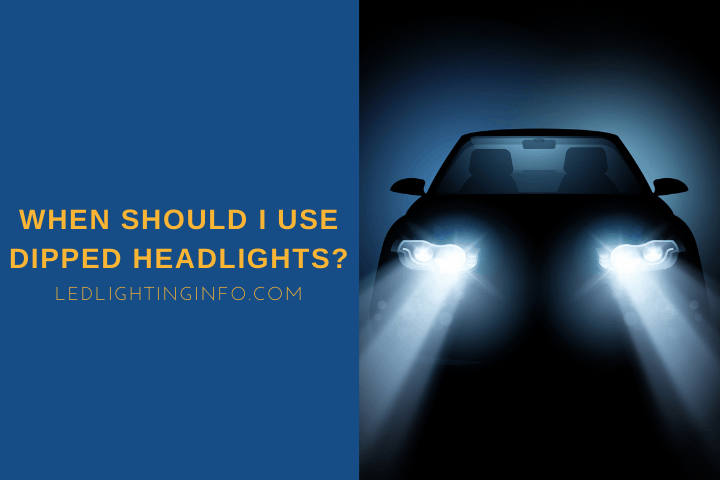Headlights are one of the most critical safety features of any car. So you must know when you need to use them.
It’s not always just a case of switching on the lights when it’s dark. Different laws are surrounding not just light levels but also other atmospheric conditions. You need to know when to use dipped headlights and when high beams are more suitable.
While the law varies depending on your location, dipped headlights should generally be used from sunset until sunrise, when it’s raining, or when any other condition restricts your vision to less than 500 feet.
In this article, I’m going to explain to you:
- Exactly what dipped headlights are
- When you should use your dipped headlights
- When you need to switch to a high beam
- Whether dipped lights can be used as DRL
What Does Dipped Headlight Mean?
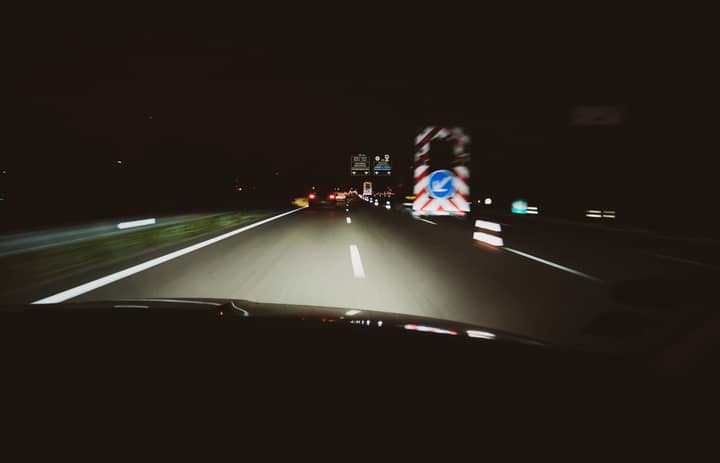
Dipped headlights are just the proper term for your standard headlights, the ones that you’ll use most of the time on your car.
In some parts of the world they’re called low beam headlights.
The reason they’re called dipped lights is because of the angle of the bulb.
They might look like they’re pointing straight ahead, but the light is actually directed down towards the road.
The light is dipped so that it doesn’t blind or dazzle oncoming drivers.
Dipped headlights are also angled slightly to the left or right, depending on where you buy the car.
If it’s a country that drives on the right, the lights will be angled to the right – again to avoid shining into the eyes of an oncoming driver to your left.
Few European cars let you switch from right-hand to left-hand driving mode, ideal for anyone driving across the continent and to the UK where it switches.
Some cars will use the same lightbulb for both dipped and full beam/high beam headlights – the bulbs themselves will have two different filaments, pointed and mirrored in different directions.
Other cars use separate bulbs. Always make sure you buy bulbs suitable for your make and model.
When Should You Turn Dipped Headlights On?
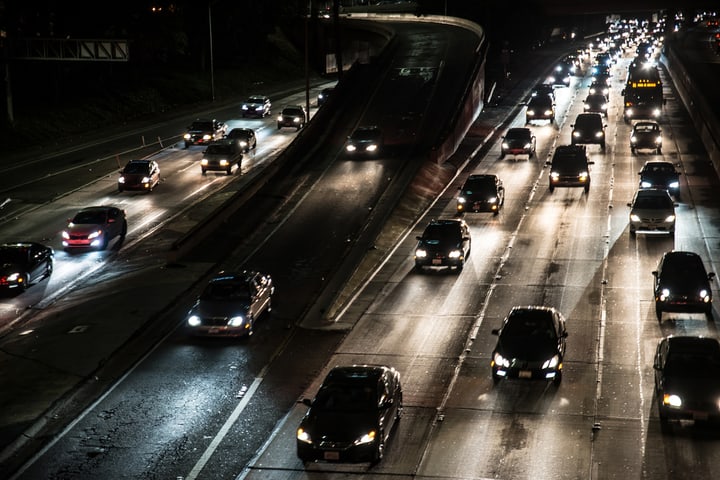
So when should you turn on your dipped headlights?
The law varies slightly depending on where you are, but broadly speaking, there are often three main times to use your headlights.
The first is, unsurprisingly, at night.
Various US states differ on the wording for what they class as night – some, like New York or Georgia, dictate that headlights have to be in use when driving 30 minutes after sunset, until 30 minutes before sunrise.
Others, like Florida or Kansas, simplify this to say they must be used from sunset to sunrise. Illinois’s wording is slightly different, opting for “dusk until dawn” – dusk meaning that period after sunset where twilight exists, and dawn before sunrise when the sky is starting to light up.
Beyond the darkness, rainfall is the second primary reason you should use your dipped headlights. Again, the wording of the law is different depending on which state you’re in.
Some states don’t specifically mention rain. Others will specifically refer to rain, while others will also note snow and ice.
Many states will make it simple by stating that whenever you’re using windshield wipers, you need to have your headlights on too.
Finally, suppose there’s any other weather condition or situation which means that your visibility is reduced. In that case, you’ll need to make sure your headlights are on.
The visible distance varies by state, with some like Alabama and Hawaii settling on 500 feet. In comparison, others like Nevada or Oklahoma make that figure 1000 feet.
The basic rule is, if there’s anything stopping you from seeing the road ahead of you clearly – a lack of light, precipitation or some other weather condition – switch those headlights on.
When Should You Switch From Dipped To Full Beam Light?
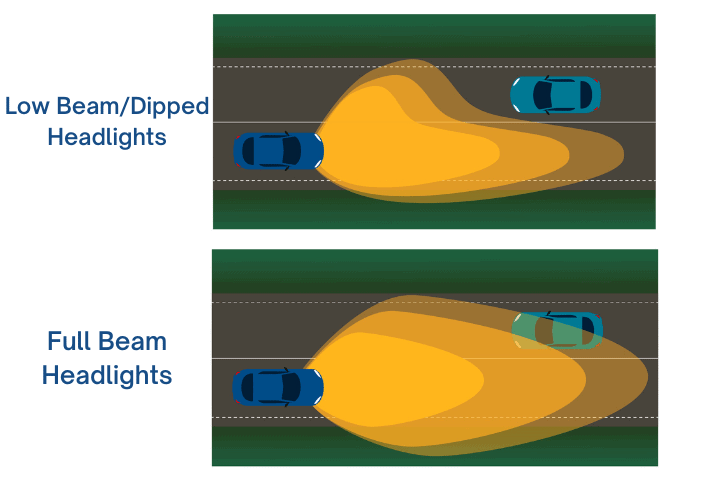
If visibility is what matters, then doesn’t it make sense to use your full beam headlights as much as possible?
No, because, unlike dipped headlights, full beam lights aren’t angled in a way to protect other road users.
Your main beam headlights are designed to be used on stretches of road where there are no street lamps, making it difficult to see ahead. And you cannot use them when approaching traffic gets close to you.
The laws on this are a little more consistent across US states than dipped headlight rules.
Generally, when oncoming traffic is within 500 feet, you must switch off your full beam headlights until the road is clear.
You also can’t use full beam lights when you’re within 300-350 yards of another car on your side of the road, as they could be blinded in their rearview mirror.
Some states, such as Texas, also ban high beam headlights during adverse weather conditions, such as heavy rain, snow, or fog.
That’s because the weather can reflect the light, shining into the path of any other car or cyclist and causing those road users to struggle even more.
If you find yourself in fog and need extra visibility, you should be using the fog lights on your car if it has them.
These are front and rear lights that emit a wider beam of light shaped like a bar.
They’re designed to stop reflecting off the fog and aren’t intended to improve your visibility as a driver, but instead to make your car more visible to other drivers.
Can You Use Dipped Lights As DRL?
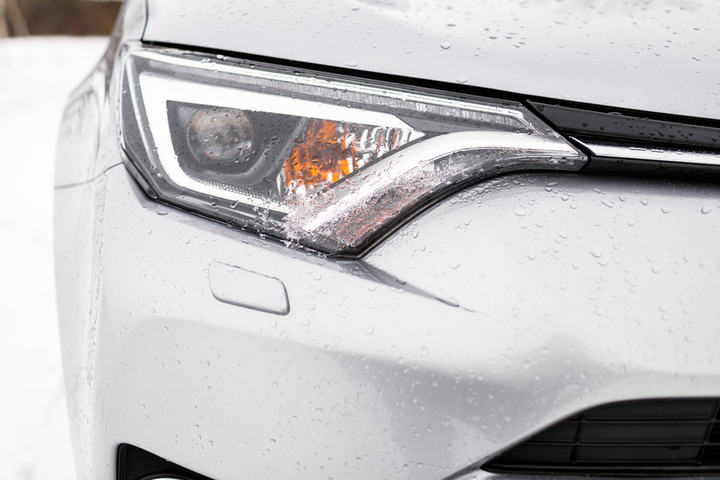
Daytime Running Lights (DRL) are designed to make your car more visible during the day.
Therefore they need to appear bright; otherwise, they won’t make a difference in the ambient sunlight.
They tend to be between 200 and 800 lumens, while dipped headlights are typically 1300 lumens for Halogen or 3000 for HID, since they’re angled down.
So you can use dipped headlights as DRL, but they might not be as effective due to the direction of the light.
Many countries worldwide require headlights to be on at all times since laws changed in 2014, particularly around mainland Europe, with DRL being adopted as a replacement.
DRL bulbs use less energy than dipped headlights, so it’s more efficient to use dedicated DRL if your car has them installed.
One thing to be absolutely clear on – you might be able to use dipped headlights as DRL, but the reverse doesn’t apply – you can’t use DRL as a sufficient replacement for your dipped headlights.
Why?
Because DRL isn’t connected to your tail lights.
If you don’t have your dipped lamps switched on, the back of your vehicle won’t be illuminated in any way, which is both illegal and extremely dangerous, especially at night.
So, don’t assume that DRL replaces headlights completely.
Final Words
You must know when to use your dipped beam headlights and when it’s more appropriate to switch to full beam.
Driving at night or in poor weather is always more dangerous. Using your car lights properly, mainly when driving somewhere without street lighting, is vital to your safety.
Do you feel confident about when you need to use full beam headlights and when dipped is more suitable?
Also, do you know the laws on hazard lights or when to use your front or rear fog lights? Is it clear or confusing?
Let me know in the comments.
Claim your 10% discount on the first order with Lasfit
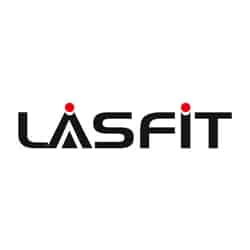
- Replace your dim halogen headlights with bright LED
- LED lighting increases your visibility on the road during the day, and for you in the night
- Select LED lighting that is exactly designed for your car
- Buy with confidence having 45 days money back guarantee
Claim 10% off on your first order over $50, using the promo-code “FIRSTTIME10“!

